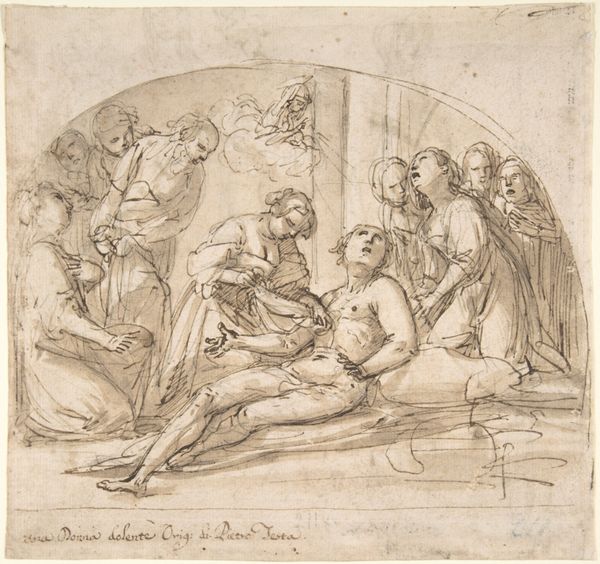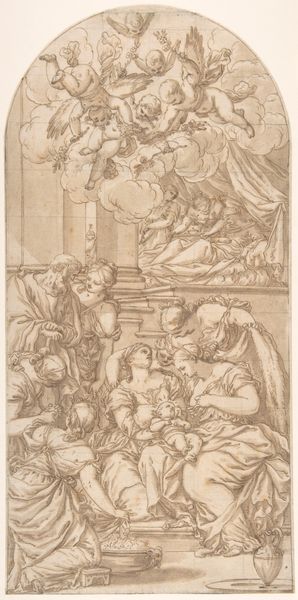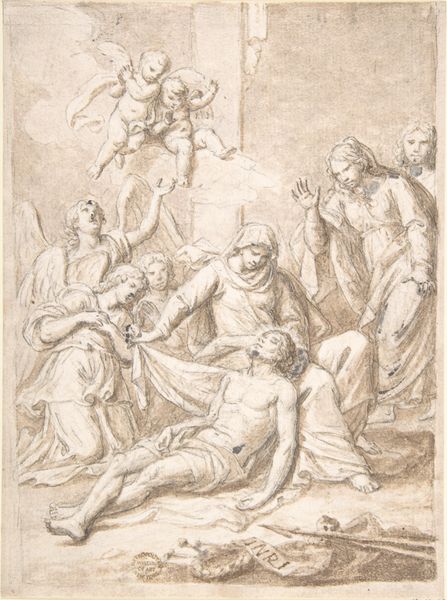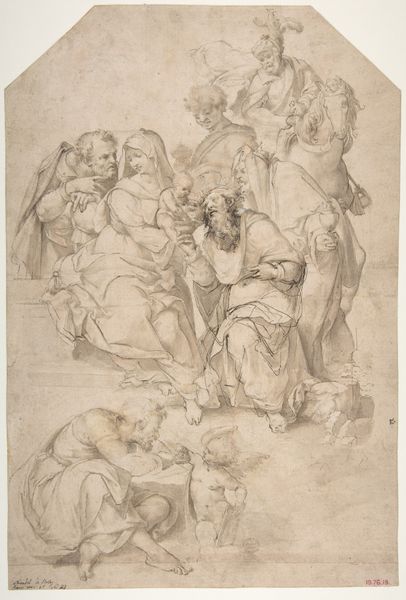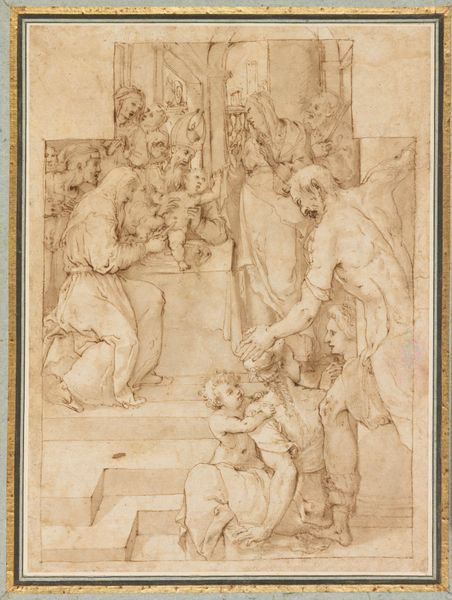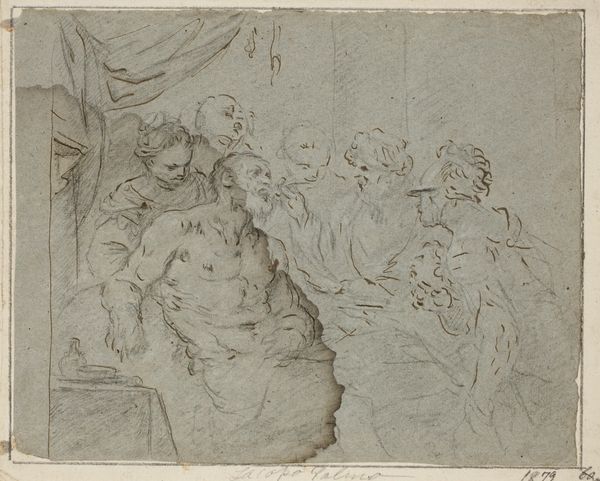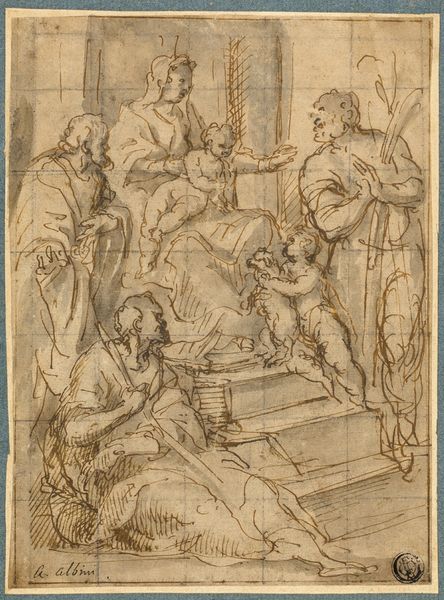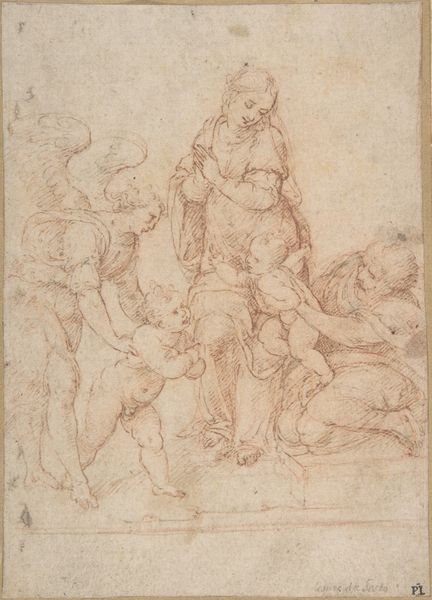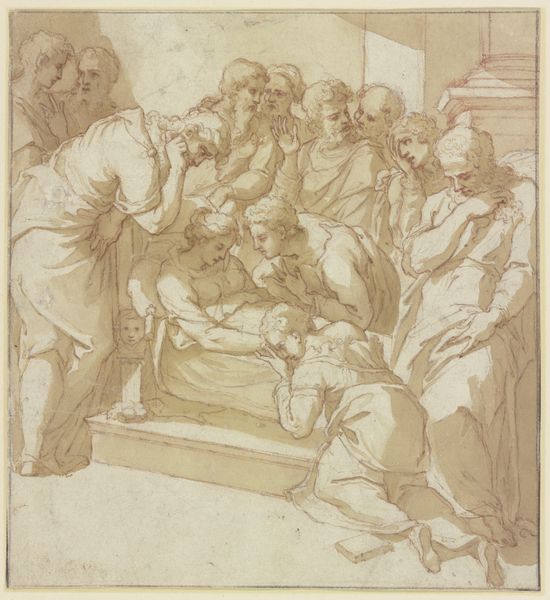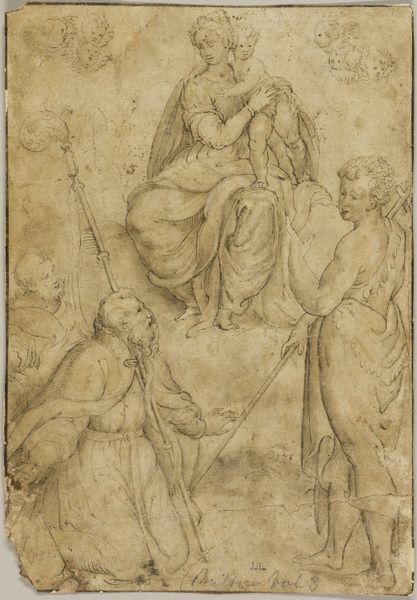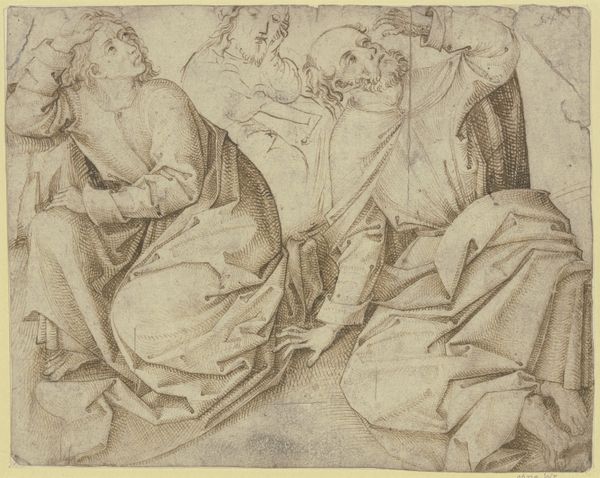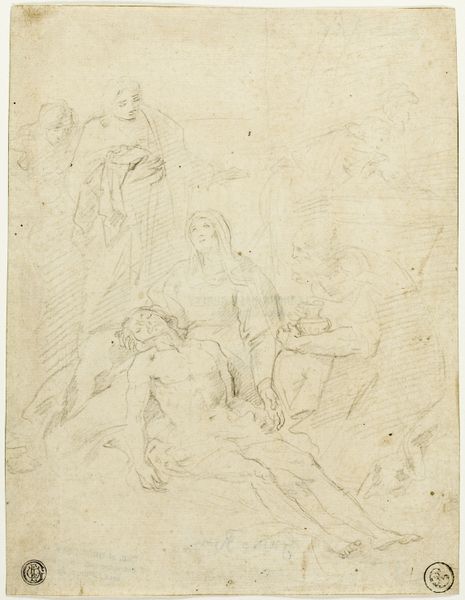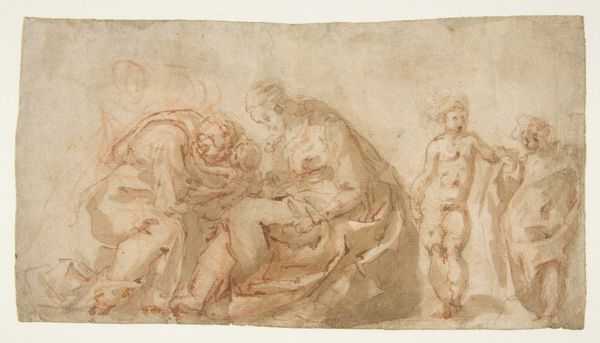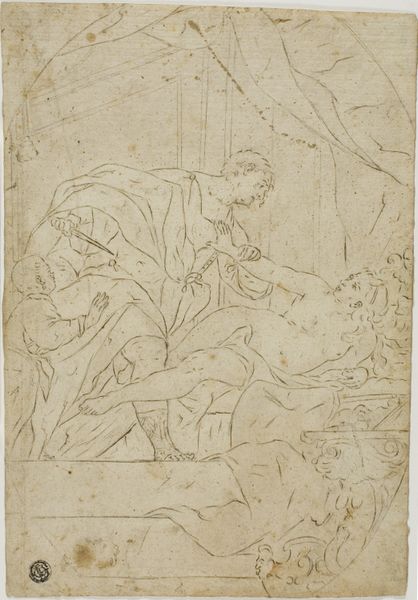
drawing, print, paper, pencil, chalk, charcoal
#
portrait
#
drawing
#
narrative-art
# print
#
pencil sketch
#
landscape
#
charcoal drawing
#
figuration
#
paper
#
form
#
11_renaissance
#
pencil
#
chalk
#
line
#
charcoal
#
history-painting
#
academic-art
#
italian-renaissance
#
realism
Dimensions: 273 × 229 mm
Copyright: Public Domain
Editor: This is "Lamentation" by Giulio Clovio, created sometime between 1540 and 1568. It's a drawing on paper, a very delicate work in chalk, charcoal, and pencil, currently housed here at the Art Institute of Chicago. The scene feels somber, almost like a muted stage play with all these figures gathered around the central form. How do you interpret this work? Curator: It is striking, isn’t it? Consider the long history of the "Lamentation" as an iconographic type. Here, Clovio is drawing from a wellspring of cultural memory, a visual tradition loaded with emotion. The arrangement itself–the body cradled, mourners gathered – echoes countless earlier depictions. Note the deliberate use of light and shadow; what do they convey to you? Editor: A sense of gravity, certainly. The highlights on Christ's body, especially, draw the eye. There's such detailed realism in the figures themselves, a stark contrast to the less defined background. Curator: Precisely. And that contrast isn’t accidental. Consider the Renaissance preoccupation with humanism, with the beauty and form of the body, juxtaposed against the implied, but vaguely drawn, world from which the deceased came. Do you observe other visual echoes of previous ‘lamentation scenes?’ Editor: Yes, in earlier depictions, halos and ornate backgrounds signified holiness and transcendence, but here the symbols of divine power have gone, leaving an empty realism. Curator: This subtle absence speaks volumes. It's not merely a religious scene but a meditation on human loss. Even without overt symbols, the echoes of earlier art imbue this scene with its profound emotional weight. Editor: So it’s almost as if Clovio strips away the overt religious symbols to highlight universal grief. It becomes less about Christ specifically, and more about the experience of mourning itself. That’s powerful. Curator: Indeed. He’s tapping into something deeply human, a shared emotional vocabulary expressed through this time-honored imagery. The past is always present. Editor: I learned how even in the absence of the symbolic, symbols still have influence. Thank you.
Comments
No comments
Be the first to comment and join the conversation on the ultimate creative platform.
